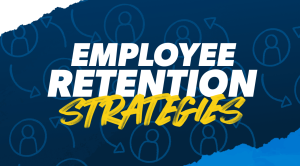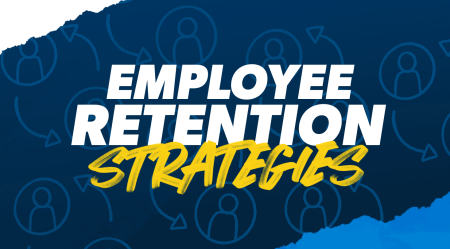Generally, there are two main levers that your business can pull to affect growth metrics: 1) customer acquisition, meaning bringing new shoppers through the door, and 2) customer retention, meaning keeping your old shoppers from exiting that door.
Each is a necessary component of business growth, but which is more cost-effective—and which should you prioritize for your small business?
It’s long been reported that customer retention has a higher ROI. But is that actually the case? Here, I explore the evidence to dissect which is actually more cost-effective—customer retention or customer acquisition.
Customer acquisition vs. retention: Fact-checking the numbers
“Obviously, customer acquisition,” you say, because you’re not new to business. Everyone has seen the stat that it costs 5X more to get a new customer than to keep an existing one…
Stat #1: It costs 5x more to get a new customer than to keep an existing one…
That’s a great stat! But have you ever tried to find the source? Go ahead, Google it and you’ll be clicking around dozens of articles and infographics that cite each other, but you’ll probably never find the actual report or survey where that 5X stat originated.
I’ll save you some time: The statistic goes back to a report put out by Lee Resources in 2010. The report itself, I can’t find online. And Lee Resources’ only social media presence, Twitter/X, last chirped in 2013. Their Facebook page no longer exists.
Their oft-cited stat of customer acquisition being 5X more costly than retention may be absolutely right—but there’s no way of knowing without seeing the actual report.
Stat #2: An increase in customer retention leads to larger increases in company profits…
According to Bain & Company, “a 5% increase in customer retention increases company profits from 25% to 95%.” That’s incredible!
But, have you tried to find the source of this one? I have. Sites usually link back to this short brief by Fred Reichheld. Unfortunately, the “95% increase in profit” is not in these 3 pages. The “25% increase in profit” is there, but a) there’s no actual study/survey reported, and b) it’s only referring to financial services.
The real source of this statistic is actually a paper by Reichheld and W. Earl Sasser, Jr. titled “Zero Defections: Quality Comes to Services.”
There are a few things you should know about this paper:
- There really is a statistic fairly close to the “95% profit” cited above: “Reducing defections by just 5% generated 85% more profits in one bank’s branch system…” So to restate, this profit increase was seen in a single bank.
- This paper was published in 1990. Over 32 years ago and the same year Tim Berners-Lee invented something called the World Wide Web.
This stat might not be completely applicable to e-commerce—something that hadn’t been invented yet.
If anything is clear, it’s that these oft-stated references should be taken with a grain of salt.
Customer retention won’t always have a higher ROI
So what was the point of this exercise in fact-checking? It isn’t so obvious that the ROI of customer retention is always more than the ROI of customer acquisition. It varies by industry, by company, and even down to the types of marketing & sales tactics that your business employs.
Customer acquisition vs. retention: What to consider
When answering the question of which is better—customer retention or acquisition— the real answer is, it depends. On many factors, in fact, including, but not limited to the following:
- Your production costs vs. operational costs
- Your product type
- Your average contract type and size
- What stage of growth your company is in
- How good your tracking data is
- The macro-environment and industry at large
Think about it logically in the context of the timeline of a company’s growth:
Retaining customers at the start of the growth curve may indeed be more cost-efficient, but it can’t be better for the success of your nascent company. New customer acquisition is overwhelmingly important at this stage in the life cycle.
On the opposite end, retention is key when a company has matured and has a large base of customers to keep and nurture.
It depends on the business itself.
Consideration #1: Do you offer products or services? And what of what kind?
Retention is a great idea, but what if your business largely produces products that last a lifetime? Think well-made cast iron skillets and Christmas tree stands; items that the average customer will only need to buy once or twice forever.
Maybe you offer services of some kind—whether digital or physical. Retention is going to be a much more important factor in growth.
Consideration #2: What size and kind of contracts are you working with?
Contract type is also very important to consider. Subscription businesses might favor retention more heavily, as well as companies with long sales cycles, say 3 or more months.
Consideration #3: What stage of growth is your company in?
If you have a young business that is growing rapidly, you might favor acquisition (at least temporarily).
There’s also a good chance you don’t have reliable retention data yet.
Customer retention attribution is much harder to capture accurately versus acquisition. This can make it hard to proof your own ROI. Do you have reliable retention data that you can trust to base future growth decisions on?
Consideration #4: What does the macro environment look like?
You cannot ignore the state of the industry and economy when deciding whether to prioritize acquisition or retention.
If you offer a service, during a recession, your focus on retention will likely need to grow.
The spending decisions of your customer base shift largely with the macro environment. So should your growth tactic.
One last consideration…
How about one last practical thought experiment: say you want to double your business.
Would it be easier to get every single one of your customers to double their spend, or double the size of your customer base? Suddenly, the obvious answer may not be so obvious for your business anymore.
The final verdict
It’s more important to track your business marketing & sales expenses accurately than to rely on “conventional wisdom” that might not actually be accurate to your business.
By understanding your finances, you can calculate your own ROI on acquisition vs. retention, giving you much better data to work off on moving forward.
Perhaps the best and most important growth metric of all? Customer Lifetime Value (LTV).
In an ideal world, you’re always going to prioritize the customer (new or existing) with the highest customer lifetime value.
Customer Lifetime Value (CLV): The most important metric
I quite like this Forbes article that touched on the silliness of that 5X statistic much like I did:
Consider what Wharton Marketing Professor Peter Fader told me in an email interview: “Here’s my take on that old belief: who cares? Decisions about customer acquisition, retention and development shouldn’t be driven by cost considerations—they should be based on future value.”
Fader added, “If we could see CLV as clearly as costs, all firms would get this. But because costs are so tangible and CLVs are a mere prediction, it’s really hard to get firms to adopt this mindset.
CLV is an important statistic for your business to really get right to answer the retention vs. acquisition question.
While CLV should always be improving (which means your business is becoming more “sticky” and loyalty is increasing), it may not be big enough to sacrifice acquisition spend. Alternatively, if your CLV is great due to your churn rate being so low, then retention is already doing well and the focus should be on acquisition.
At the end of the day, no generic statistic should drive the direction of your business.
*******
Disclaimer:
The views and opinions expressed in this blog are those of the authors and do not necessarily reflect the official policy or position of Lendio. Any content provided by our authors are of their opinion and are not intended to malign any religion, ethnic group, club, organization, company, individual or anyone or anything.
The information provided in this post does not, and is not intended to, constitute business, legal, tax, or accounting advice and is provided for general informational purposes only. Readers should contact their attorney, business advisor, or tax advisor to obtain advice on any particular matter.
Read the full article here












